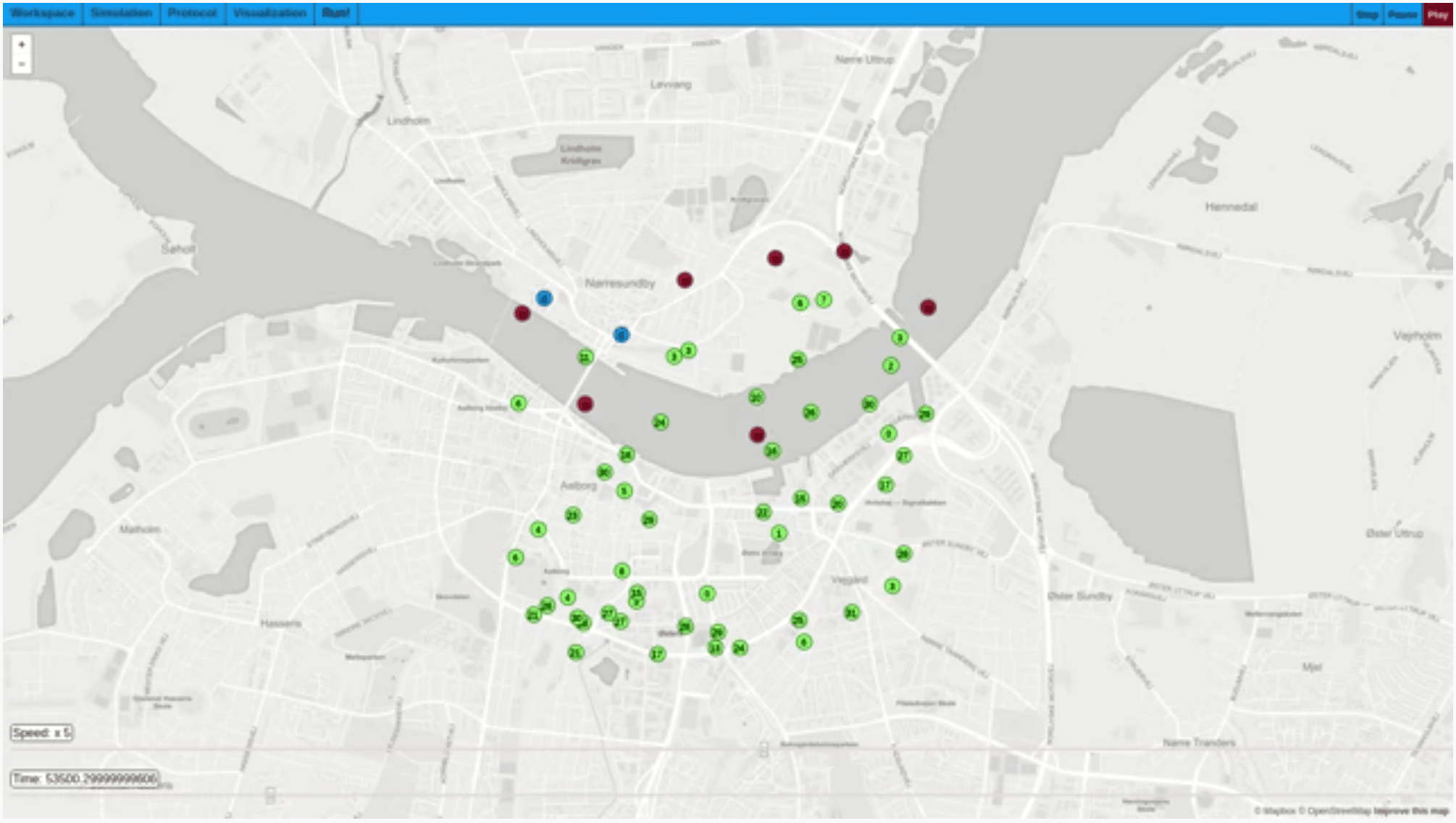

- It is well known that it is difficult to measure the performance of ad-hoc wireless networks. What we have done is to build a computer model to simulate these networks.
Peter Gjøl Jensen, University of Aalborg
| Share |
|
At the Wireless Congress 2019 researchers from Aalborg University, Denmark, will present a simulation framework for analysing wireless network protocols. Similar to the Digital Twin concept, this tool offers precise and reliable simulations of real world scenarios, to simplify the design of large-scale networks. A digital twin of the NeoMesh radio modules and communication protocol has been tested.
The digital twin, a digital replica of a physical entity, can help developers verify their ideas without them having to build a physical device or infrastructure to see if everything works as expected. Researchers from the University of Aalborg, Denmark, have developed technology equivalent the digital twin, only for wireless network connectivity.
As an example, this simulation framework has been used by the researchers to predict the behaviour of a large number of networked devices for disaster relief in the Philippines. The devices called Reachi enable rescue workers to send reports to relief coordinators, even if all communication infrastructure were damaged due to e.g. an earthquake. The Reachi devices are equipped with NeoCortec radio modules that automatically form a dynamic mesh network for messages to travel from sender to destination.
Wireless networks are difficult
Peter Gjøl Jensen, assistant professor at the Computer Science Department at Aalborg University explains:
– It is well known that it is difficult to measure the performance of ad-hoc wireless networks. What we have done is to build a computer model to simulate these networks. It is a modular framework running on the statistical model checker UPPAAL. It has components simulating the connectivity and the hardware aspects of a specific network, and a web-based visualization interface that allows the user to see how information flows through the network.
– This simulation tool makes it much easier to design complex connectivity solutions and to test their performance, to see if they behave as expected. In our research we have compared our simulated results with real measurements from a small-scale test bed developed by NeoCortec, showing a high level of precision in the simulation.
A virtual world
– This is a tool designed to help developers of new protocols and modules to troubleshoot them, and to test the behaviour of large implementations of a network. It allows for quick prototyping, and you can easily see what is happening in the virtual hardware devices when the network simulation is running. Moreover, you can repeat the simulation with the exactly identical scenario if needed.
– We have created a virtual world in which you can test drive your wireless network. It is a digital twin giving you the opportunity to experiment with a specific network setup, and not only with a fixed topology but also when you have a network that is dynamic and subject to change.
– It gives you statistical data about the behaviour of your protocol, and makes it much easier to develop your technology further. Now, instead of having to build prototypes and test them you can feed a plug-in describing the protocol into the simulation tool and see if everything works as planned.
Changing parameters
– The tool will help you do a Design Space Exploration, giving you an overview of what happens when you change different parameters, e.g. how the size of data packets and the transmission schedule influence current consumption and battery lifetime.
According to Peter Gjøl Jensen the simulation framework he is presenting at the Wireless Congress differs from other similar tools in a number of ways. It is highly scalable and able to simulate large networks quickly. Moreover it is able to perform a large number of simulations to give you results with a statistical guarantee.
The session ”An Automatic Framework for Reliable and Repeatable Ad-Hoc Network Simulations” is scheduled for Day 2 of the Wireless Congress, Wednesday 23. October, 11:00-11:30, as part of the Technology Session: